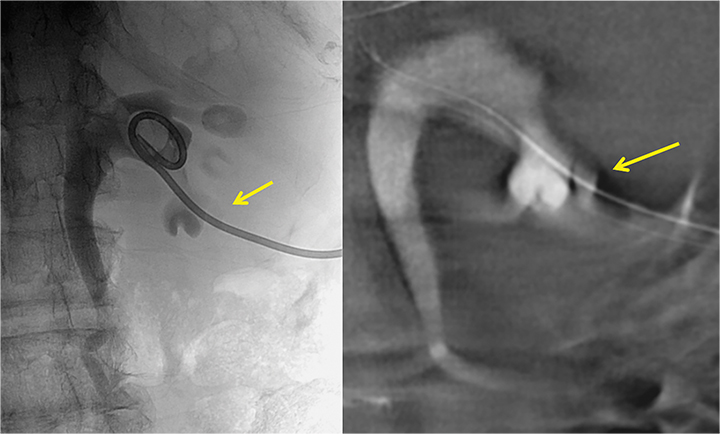Interventional Radiology: Fostering a spirit of innovation
Images

Since Charles Dotter’s first serial catheter dilatation of obstructive superficial femoral artery disease in 1964, the field of interventional radiology (IR) has revolutionized patient care.1 Driven by tireless innovation, interventionalists have introduced novel minimally invasive procedures, devices, and support products to help solve challenging medical and surgical problems. These innovations have changed the landscape of medicine, impacting patient care algorithms and medical disciplines. Simultaneously, IR has fostered a customer-driven medical industry and bridged collaborative partnerships to help bring ideas to the market place for the global advancement of patient care. Today, IR remains a force of novel clinical thinking, stimulating medical research, innovation and education.
The IR laboratory offers vascular and nonvascular procedures for both adult and pediatric patients. The unifying theme is image-guided placement of wires, catheters and devices, primarily for therapeutic purposes. Core vascular-based procedures include catheter-directed treatment of peripheral arterial disease, dysfunctional hemodialysis access, vascular malformations, arterial bleeding, portal hypertension, veno-occlusive disorders, venous insufficiency, varicoceles and tumors (eg, arterial embolization, gene therapy), in addition to placement of temporary and permanent vascular access catheters. Nonvascular procedures include treatment for hepatobiliary and pancreatic disorders, obstructive uropathy, tumors (eg, cryoablation, radiofrequency ablation) and degenerative spine disease. Placement of drainage and enteric access catheters and visceral and soft tissue biopsies are additional core nonvascular procedures. Fluoroscopy, ultrasound, computed tomography, magnetic resonance imaging, either singly or in combination, may be used for image guidance and intraprocedural monitoring depending upon the disease process, procedure, and patient (Figure 1).
These IR procedures not only offer less invasive treatment, but they also offer a way to reduce healthcare expenditures. Traditionally, IR procedures have been performed in a hospital setting. With innovations in clinical workflow, many select procedures can be performed safely in outpatient settings. These workflow innovations have further helped interventionalists serve an important role in efficient utilization of healthcare resources.
Whether IR procedures are performed in hospitals or outpatient clinical practices, effective communication is important to ensure appropriate care and technical performance. Effective communication is achieved through dynamic team collaboration among the interventionalist, technologists, and primary and secondary healthcare providers. In this way, IR strategies are best tailored to the patient’s clinical presentation and disease process, while the duration and extent of the procedure are potentially minimized.
While the spirit of innovation continues to drive the direction and flow of interventional radiology, the specialty faces many external challenges. These include market competition from other medical disciplines, economic constraints, and demand for high productivity. Maintaining a dominant force in minimally invasive procedural care requires all interventionalists to embrace a patient-centric approach. Commitments to primary patient responsibilities, clinical excellence and continuous quality control and improvement will help interventionalists retain a strong presence, grow clinical volumes and meet clinical and administrative demands. Successfully steering through the external challenges will allow interventionalists to continue to think big and focus on innovations that enhance patient care.
2015 SIR Meeting
The 2015 meeting of the Society of Interventional Radiology, taking place Feb.28-March 5 in Atlanta, GA, will mark nearly 50 years of interventional radiology education. This year’s scientific, didactic, and plenary sessions will offer comprehensive education in basic science, clinical care and procedural techniques for interventional radiologists, technologists, and nurses of all skill levels and backgrounds. In addition, IR economic and management topics will be offered for healthcare administrators. In the spirit of IR innovation, we encourage all in the interventional radiology community to attend.
References
- Rösch J, Keller FS, Kaufman JA. The birth, early years, and future of interventional radiology. J Vasc Interv Radiol. 2003;14:841–853.
Citation
Interventional Radiology: Fostering a spirit of innovation. Appl Radiol.
January 23, 2015